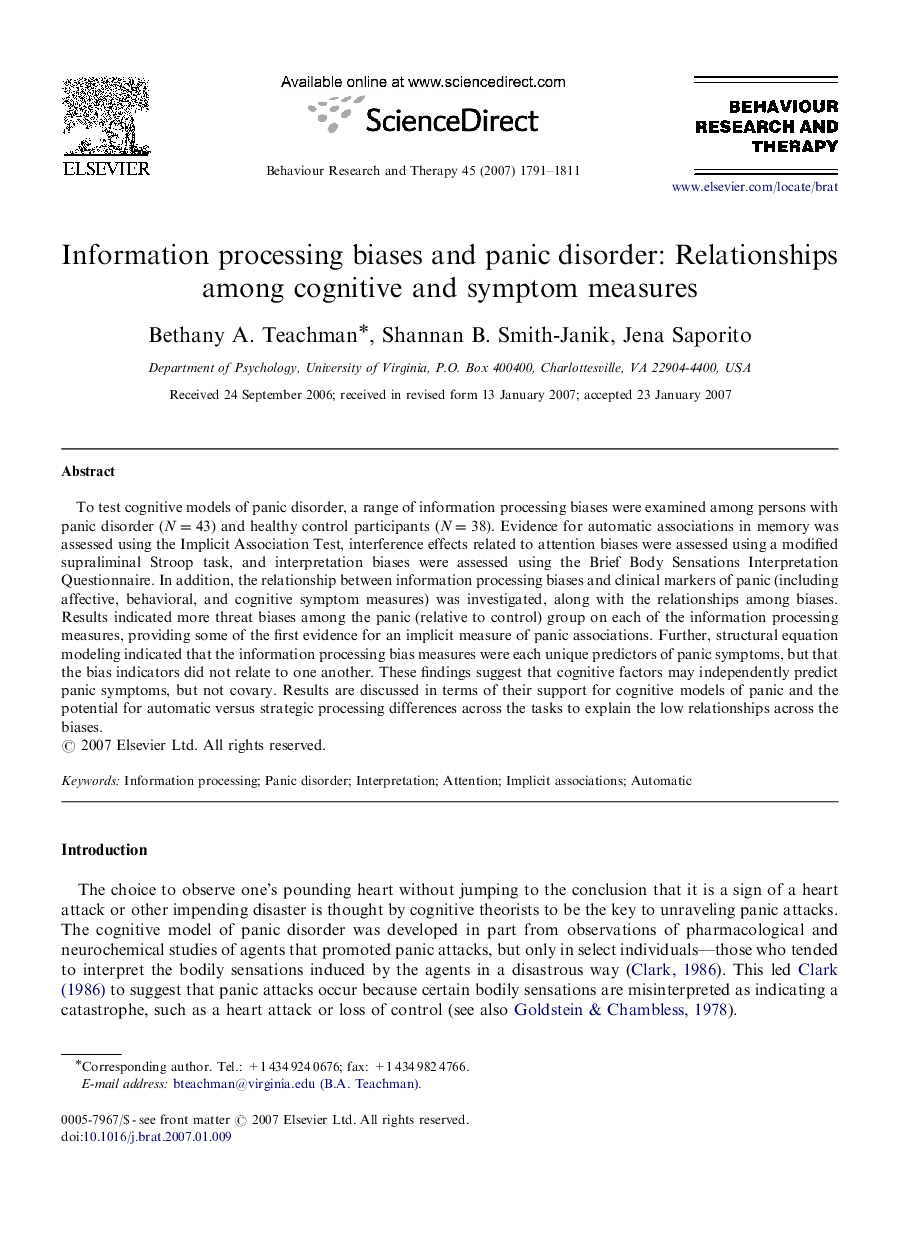| Article ID | Journal | Published Year | Pages | File Type |
|---|---|---|---|---|
| 10444936 | Behaviour Research and Therapy | 2007 | 21 Pages |
Abstract
To test cognitive models of panic disorder, a range of information processing biases were examined among persons with panic disorder (N=43) and healthy control participants (N=38). Evidence for automatic associations in memory was assessed using the Implicit Association Test, interference effects related to attention biases were assessed using a modified supraliminal Stroop task, and interpretation biases were assessed using the Brief Body Sensations Interpretation Questionnaire. In addition, the relationship between information processing biases and clinical markers of panic (including affective, behavioral, and cognitive symptom measures) was investigated, along with the relationships among biases. Results indicated more threat biases among the panic (relative to control) group on each of the information processing measures, providing some of the first evidence for an implicit measure of panic associations. Further, structural equation modeling indicated that the information processing bias measures were each unique predictors of panic symptoms, but that the bias indicators did not relate to one another. These findings suggest that cognitive factors may independently predict panic symptoms, but not covary. Results are discussed in terms of their support for cognitive models of panic and the potential for automatic versus strategic processing differences across the tasks to explain the low relationships across the biases.
Related Topics
Health Sciences
Medicine and Dentistry
Psychiatry and Mental Health
Authors
Bethany A. Teachman, Shannan B. Smith-Janik, Jena Saporito,
